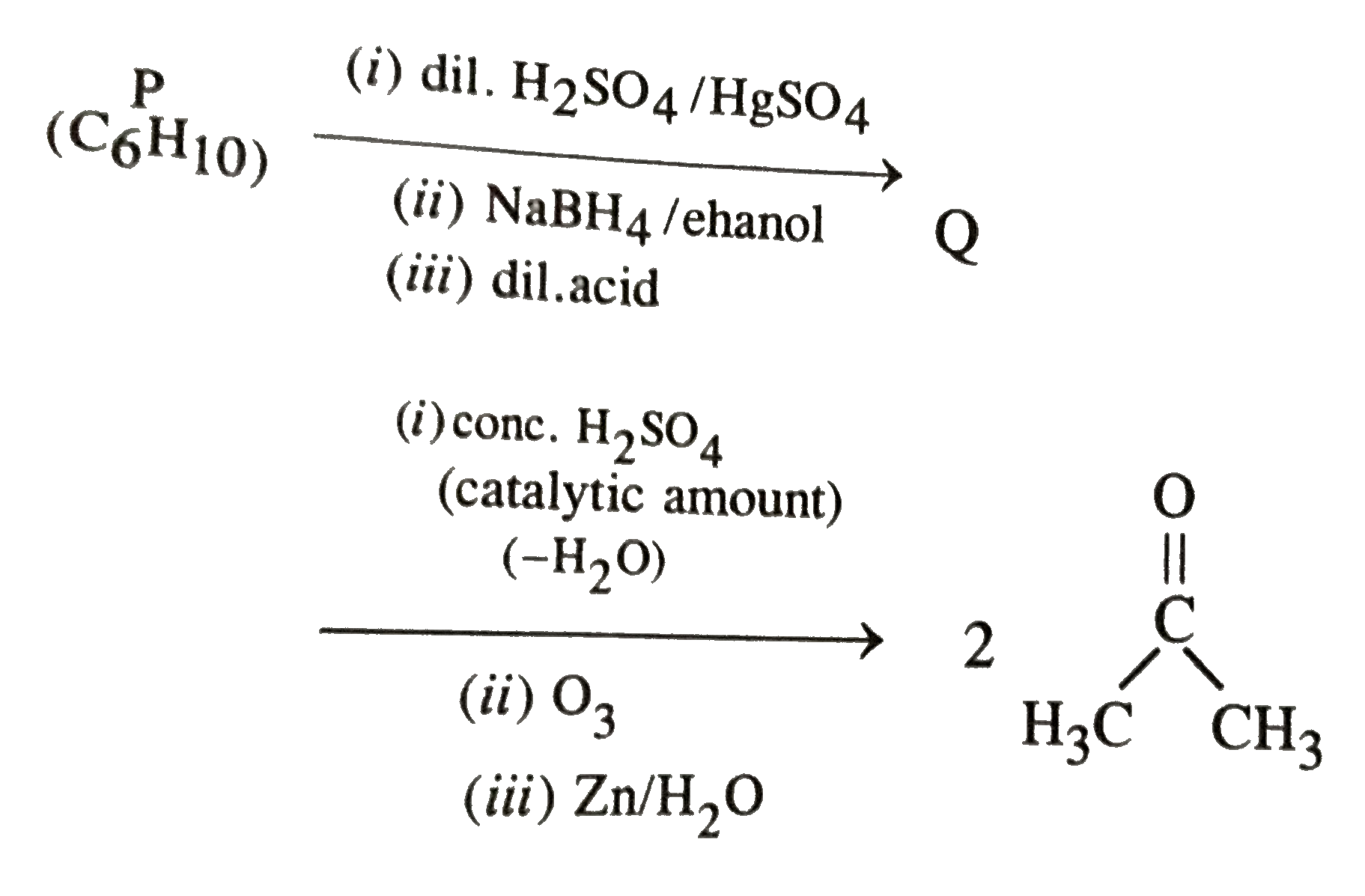The h.c.p. and c.c.p. structures for a given crystal system of equal - sized spheres are expected to have
the same volume, 1.33πr3
the same number of particles within the given unit cell
the same ratio, 0.74, of the total sphere volume to the unit - cell volume
All of the above
The correct Answer is:A, C
To solve the question regarding the hexagonal close packing (h.c.p.) and cubic close packing (c.c.p.) structures for a given crystal system of equal-sized spheres, we will analyze the properties of both structures step by step.
1. Understanding the Volume of Spheres:
- The volume V of a single sphere is given by the formula:
V=43πr3
- For both h.c.p. and c.c.p., since the spheres are of equal size, the volume of the spheres will be the same.
Hint: Remember that the volume formula for a sphere is constant regardless of the packing arrangement.
2. Number of Particles in Unit Cell:
- In hexagonal close packing (h.c.p.), there are 6 spheres per unit cell.
- In cubic close packing (c.c.p.), there are 4 spheres per unit cell.
- Therefore, the number of particles (spheres) in the unit cell is different for h.c.p. and c.c.p.
Hint: Count the number of spheres in each packing arrangement to compare.
3. Packing Fraction Calculation:
- The packing fraction is defined as the ratio of the total volume of the spheres to the volume of the unit cell.
- For both h.c.p. and c.c.p., the packing fraction is approximately 0.74.
- This means that about 74% of the volume of the unit cell is occupied by the spheres in both arrangements.
Hint: Use the packing fraction formula to verify the efficiency of space utilization in both structures.
4. Conclusion:
- From the analysis:
- Both h.c.p. and c.c.p. have the same volume for individual spheres.
- They have different numbers of particles per unit cell (6 for h.c.p. and 4 for c.c.p.).
- Both structures have the same packing fraction of approximately 0.74.
- Therefore, the correct statements regarding h.c.p. and c.c.p. are:
- They have the same volume.
- They have different numbers of particles in the unit cell.
- They have the same packing fraction.
Final Answer:
The h.c.p. and c.c.p. structures for a given crystal system of equal-sized spheres are expected to have:
- Same volume (True)
- Different number of particles in the unit cell (False)
- Same packing fraction (True)
Thus, the correct statements are that they have the same volume and the same packing fraction.
- The volume V of a single sphere is given by the formula:
V=43πr3
- For both h.c.p. and c.c.p., since the spheres are of equal size, the volume of the spheres will be the same.
- In hexagonal close packing (h.c.p.), there are 6 spheres per unit cell.
- In cubic close packing (c.c.p.), there are 4 spheres per unit cell.
- Therefore, the number of particles (spheres) in the unit cell is different for h.c.p. and c.c.p.
- The packing fraction is defined as the ratio of the total volume of the spheres to the volume of the unit cell.
- For both h.c.p. and c.c.p., the packing fraction is approximately 0.74.
- This means that about 74% of the volume of the unit cell is occupied by the spheres in both arrangements.
- From the analysis:
- Both h.c.p. and c.c.p. have the same volume for individual spheres.
- They have different numbers of particles per unit cell (6 for h.c.p. and 4 for c.c.p.).
- Both structures have the same packing fraction of approximately 0.74.
- Therefore, the correct statements regarding h.c.p. and c.c.p. are:
- They have the same volume.
- They have different numbers of particles in the unit cell.
- They have the same packing fraction.
The h.c.p. and c.c.p. structures for a given crystal system of equal-sized spheres are expected to have:
- Same volume (True)
- Different number of particles in the unit cell (False)
- Same packing fraction (True)
Similar Questions
An hcp and a ccp structure for a given element would be expected to have
View SolutionAn hcp and a ccp structure for a given element would be expected to have
(a)The same co-ordinational number
(b)the same density
(c)the same packing fraction
(d)all of the above
View SolutionIf a,b,c are in H.P, where a>c>0, then :
View SolutionReaction for which Kp and Kc are equal
View SolutionThe correct order of the size of C, N, P and S is
View SolutionAn acyclic hydrocarbon P, having molecular fromula C6H10 gave acetone as the only organic product through the followig sequence of reaction in which Q is an intermediate organicn compound

The structure of compound P is
View SolutionAn acyclic hydrocarbon P, having molecular fromula C6H10 gave acetone as the only organic product through the followig sequence of reaction in which Q is an intermediate organicn compound

The structure of compound P is
View SolutionThe molar specific heats of an ideal gas at constant pressure and volume are denotes by CP and Cυ respectively. If γ=CPCυ and R is the universal gas constant, then Cυ is equal to
View SolutionAn ionic compound is expected to have octahedral structure if rc/ra(rc<ra) lies in the range of:
View SolutionIf C and D are two events such that C⊂DandP(D)≠0 , then the correct statement among the following is : (1) P(C∣D)=P(C) (2) P(C∣D)≥P(C) (3) P(C∣D)<P(C) (4) P(C∣D)=P(D)/(P(C)
View Solution
